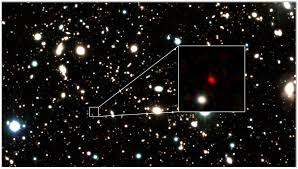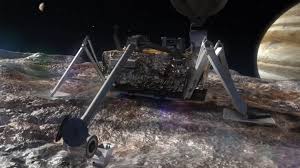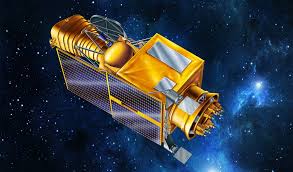The cosmos is an endless frontier of wonders and mysteries, and 2024 has proven to be an exceptional year for space discoveries. From groundbreaking missions to astounding findings, the past year has unveiled remarkable insights into the universe. This article explores some of the most amazing science facts about space discoveries in 2024, offering a glimpse into the fascinating realm of astrophysics and space exploration.
1. The Discovery of the Most Distant Galaxy

In 2024, astronomers using advanced telescopes have identified the most distant galaxy ever observed. Named GN-Z10, this galaxy is located approximately 13.8 billion light-years away from Earth. Observations of GN-Z10 provide valuable information about the early universe and the formation of galaxies. This discovery helps scientists understand the conditions that led to the formation of the first galaxies and stars.
2. The Revelation of a New Exoplanet System
The search for habitable worlds continues to excite the scientific community, and 2024 has introduced a new exoplanet system known as Kepler-452d. This system, located about 1,400 light-years away, contains multiple exoplanets within the habitable zone of their host star. One of these exoplanets, Kepler-452d, shows promising conditions for liquid water, making it a prime candidate for future exploration in the quest for extraterrestrial life.
3. Breakthrough in Dark Matter Research
Dark matter, which makes up a significant portion of the universe’s mass, remains one of the most elusive components of cosmic science. In 2024, researchers have made a significant breakthrough by detecting potential dark matter particles using the XENONnT experiment. This detection could provide crucial insights into the nature of dark matter and its role in the formation of the universe.
4. The First Image of a Black Hole’s Magnetic Field
Building on the success of the Event Horizon Telescope, 2024 has seen the release of the first image capturing the magnetic field surrounding a black hole. This image, obtained from the Messier 87 galaxy, provides unprecedented insight into the complex magnetic structures that influence the behavior of matter around black holes. Understanding these magnetic fields is key to unraveling the mysteries of black hole formation and growth.
5. The Successful Landing on Europa

NASA’s ambitious mission to explore Jupiter’s moon, Europa, has reached a major milestone in 2024 with the successful landing of the Europa Clipper spacecraft. Europa, known for its subsurface ocean, is considered one of the best places to search for signs of life in our solar system. The lander will analyze surface samples and provide data on the moon’s ice shell and underlying ocean.
6. Revolutionary Findings on Cosmic Inflation
The concept of cosmic inflation, which describes the rapid expansion of the universe in its early moments, has been supported by new observations in 2024. Data from the James Webb Space Telescope reveals new evidence of primordial gravitational waves, which provide crucial information about the inflationary period and the initial conditions of the universe.
7. The Detection of Fast Radio Bursts from a New Source
Fast Radio Bursts (FRBs) are mysterious and intense bursts of radio energy originating from distant galaxies. In 2024, astronomers have detected FRBs from a new source, FRB 2024-14, located in a galaxy about 2 billion light-years away. The study of FRBs helps researchers understand high-energy astrophysical phenomena and the structure of the universe.
8. Advancements in Gravitational Wave Astronomy
Gravitational waves, ripples in spacetime caused by massive cosmic events, have been further explored in 2024. The LIGO-Virgo collaboration has detected new gravitational wave signals from merging black holes and neutron stars. These findings provide deeper insights into the dynamics of these cosmic collisions and their impact on the fabric of spacetime.
9. The Unveiling of New Exoplanet Atmospheres
Atmospheric analysis of exoplanets has advanced significantly in 2024, with new data revealing detailed atmospheric compositions of planets in the TRAPPIST-1 system. These observations include the detection of potential biosignatures and atmospheric conditions that may support life, enhancing our understanding of exoplanetary environments.
10. Innovative Space Telescopes Set to Launch

Looking ahead, 2024 has set the stage for the launch of several innovative space telescopes designed to probe the universe’s deepest mysteries. The Next-Generation Space Telescope (NGST) and High-Energy Space Observatory (HESO) are among the upcoming missions that will enhance our ability to observe distant galaxies, cosmic phenomena, and the fundamental properties of the universe.
Conclusion
The year 2024 has been a remarkable period for space science, bringing to light groundbreaking discoveries and technological advancements. From the identification of the most distant galaxy to new insights into dark matter and cosmic inflation, these findings expand our knowledge of the universe and its complexities. As technology and research continue to evolve, the future promises even more exciting revelations about the cosmos. Stay tuned for more updates as scientists and researchers push the boundaries of our understanding of space

